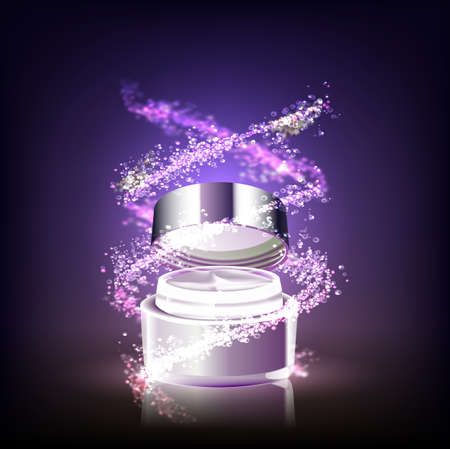1. Understanding Dry Skin: Causes and Concerns
Dry skin is a common issue for many Americans, and it can be more than just a nuisance—it impacts both how your skin feels and looks. Let’s break down why dry skin happens, why it’s especially noticeable in the U.S., and what it means for your daily comfort.
What Causes Dry Skin?
Several factors can lead to dry skin (also called xerosis). Here’s an easy-to-read overview:
| Cause | Description |
|---|---|
| Weather | Cold winters, dry air, and indoor heating systems—common across the U.S.—can zap moisture from your skin. |
| Hot Showers | Long, hot showers or baths strip away natural oils that keep your skin soft. |
| Harsh Soaps & Cleansers | Many soaps remove essential oils, leading to tight, flaky skin. |
| Aging | As we age, our skin produces less oil, making dryness more likely. |
| Medical Conditions | Eczema, psoriasis, and thyroid disorders can all cause or worsen dry skin. |
| Environmental Factors | Air conditioning in summer and heating in winter both lower humidity indoors, drying out your skin even more. |
Why Is Dry Skin So Common in the U.S.?
The United States experiences a wide range of climates, but many areas have cold winters or low humidity. In addition, lifestyle habits—like frequent hot showers and strong air conditioning—are widespread. These conditions make it harder for the skin to hold onto moisture throughout the year.
The Impact on Comfort and Appearance
If you have dry skin, you might notice symptoms like itchiness, flaking, rough patches, or even cracks. This doesn’t just affect how your skin feels—dryness can also make fine lines and wrinkles stand out more. Keeping your skin hydrated isn’t just about comfort; it helps you look your best too.
2. What to Look for in a Moisturizer: Key Ingredients Explained
When it comes to choosing the best moisturizer for dry skin, U.S. dermatologists often highlight certain ingredients that truly make a difference. Let’s break down what makes these ingredients stand out and how they help different skin types.
Top Dermatologist-Approved Ingredients
| Ingredient | How It Works | Best For |
|---|---|---|
| Hyaluronic Acid | Draws water into the skin and keeps it hydrated by holding up to 1000 times its weight in moisture. | All skin types, especially very dry or dehydrated skin |
| Ceramides | Reinforce the natural skin barrier and prevent moisture loss, keeping skin smooth and protected. | Dry, sensitive, or eczema-prone skin |
| Glycerin | A powerful humectant that attracts water from the air into the outer layer of your skin. | Normal to very dry skin; great for layering with other hydrators |
| Squalane | Mimics your skin’s own oils, offering lightweight yet deep hydration without clogging pores. | Combination, sensitive, and acne-prone skin |
| Shea Butter | Nourishes deeply and locks in moisture, helping to soften rough patches. | Very dry or flaky skin; ideal for winter months |
| Niacinamide (Vitamin B3) | Boosts barrier function and soothes irritation while supporting even tone. | Sensitive, irritated, or uneven-textured skin |
How These Ingredients Help Different Skin Types
If your skin feels tight or looks flaky, hyaluronic acid and glycerin are superstar hydrators that give an instant plumping effect. For those with sensitive or compromised skin barriers, ceramides and niacinamide work to calm redness and strengthen your natural defenses. If you have combination or acne-prone skin but still struggle with dryness, squalane offers non-greasy hydration that won’t trigger breakouts. And for those really stubborn dry spots—think elbows or cheeks in winter—rich emollients like shea butter can be a lifesaver.
Pro Tip from U.S. Dermatologists:
Look for moisturizers that combine several of these ingredients for maximum hydration and barrier support. Avoid products with alcohol or heavy fragrances if your skin is extra sensitive.

3. U.S. Dermatologist-Recommended Moisturizers: Top Picks
Finding the right moisturizer for dry skin can be overwhelming, but American dermatologists often recommend products that combine gentle, effective ingredients with proven hydration benefits. Here’s a curated list of top moisturizers, each chosen for their standout ingredients and ability to restore moisture without clogging pores or irritating sensitive skin.
Chemist-Backed Favorites for Dry Skin Relief
| Product | Main Ingredients | Why Dermatologists Love It | Best For |
|---|---|---|---|
| CeraVe Moisturizing Cream | Ceramides, Hyaluronic Acid | Restores the protective skin barrier and locks in moisture; fragrance-free and non-comedogenic | Severely dry, sensitive, or eczema-prone skin |
| Neutrogena Hydro Boost Water Gel | Hyaluronic Acid, Glycerin | Lightweight gel texture absorbs quickly, providing deep hydration without heaviness | Normal to dry skin looking for a non-greasy feel |
| Vanicream Moisturizing Cream | Petrolatum, Glycerin | Free from common irritants; recommended for allergy-prone or sensitive skin types | Sensitive, easily irritated dry skin |
| Eucerin Advanced Repair Cream | Urea, Ceramides, Glycerin | Gently exfoliates while intensely moisturizing; great for rough or flaky patches | Very dry, rough skin needing extra care |
| La Roche-Posay Lipikar Balm AP+ | Shea Butter, Niacinamide, Glycerin | Soothes itching and irritation while strengthening the skin barrier; suitable for children and adults alike | Dry to very dry skin with itchiness or atopic tendencies |
How These Ingredients Help Your Skin Barrier
- Ceramides: Essential fats that help rebuild your skin’s natural protective layer.
- Hyaluronic Acid: Draws water into the upper layers of your skin for instant plumping and hydration.
- Glycerin: A classic humectant that attracts moisture from the air into your skin.
- Shea Butter & Petrolatum: Provide rich occlusion to seal in moisture and prevent water loss.
- Niacinamide: Calms redness and supports an even, resilient complexion.
- Urea: Softens rough patches and gently exfoliates dead cells while boosting moisture absorption.
Your Personalized Pick: What Should You Choose?
If you prefer a lightweight feel but need serious hydration, look for hyaluronic acid-based gels like Neutrogena Hydro Boost. For stubborn dryness or eczema-prone areas, creams rich in ceramides and shea butter (such as CeraVe or La Roche-Posay) work best. Those with sensitivities should stick to fragrance-free formulas like Vanicream. Always apply your moisturizer to slightly damp skin after cleansing to lock in the most moisture possible.
4. American Drugstore vs. Luxury: Options for Every Budget
When it comes to choosing the best moisturizer for dry skin, you’ll find a wide range of options at both your local drugstore and luxury beauty counters across the U.S. Let’s break down the differences, so you can decide which fits your needs and budget best.
What Sets Drugstore and Luxury Moisturizers Apart?
Drugstore brands are loved for their affordability and easy availability—think Target, CVS, or Walgreens. Many are dermatologist-recommended and use proven hydrating ingredients like ceramides, hyaluronic acid, and glycerin. Luxury brands, found at Sephora or department stores, often boast extra actives, unique textures, and elegant packaging, sometimes adding ingredients like squalane, peptides, or exclusive botanical extracts.
Ingredient Comparison: What’s Inside?
| Brand Type | Common Key Ingredients | Texture | Scent | Price Range (USD) |
|---|---|---|---|---|
| Drugstore | Ceramides, Hyaluronic Acid, Glycerin | Creamy or Gel-Cream | Mild or Fragrance-Free | $7-$25 |
| Luxury | Squalane, Peptides, Botanical Extracts | Rich Creams & Silky Lotions | Lightly Scented or Signature Fragrances | $40-$300+ |
Efficacy & Value: What Do Dermatologists Say?
Many U.S. dermatologists agree that you don’t need to spend big bucks for effective hydration—drugstore picks like CeraVe Moisturizing Cream and Neutrogena Hydro Boost Water Gel are cult favorites thanks to their science-backed formulas and wallet-friendly prices. However, luxury options such as La Mer Crème de la Mer or SkinCeuticals Triple Lipid Restore 2:4:2 may appeal if you’re looking for extra pampering or targeted anti-aging benefits.
Local Availability & Accessibility
You can grab most drugstore moisturizers at nearly any supermarket or pharmacy nationwide—perfect for busy American lifestyles. Luxury brands tend to be available at specialty retailers or online boutiques and might offer more personalized consultations in-store.
Quick Comparison Table: Top Picks by Category
| Category | Name (U.S. Favorite) | Main Hydrating Ingredients | Where to Buy |
|---|---|---|---|
| Best Drugstore Pick | CeraVe Moisturizing Cream | Ceramides, Hyaluronic Acid | CVS, Target, Walmart |
| Best Luxury Pick | La Mer Crème de la Mer | Miracle Broth™, Seaweed Extracts | Saks Fifth Avenue, Nordstrom, Sephora.com |
| Derm-Recommended Hybrid (Mid-Range) | First Aid Beauty Ultra Repair Cream | Colloidal Oatmeal, Shea Butter | Sephora, Ulta Beauty, Amazon.com |
5. How to Apply Moisturizer for Best Results
Tips from U.S. Dermatologists
Applying moisturizer correctly is just as important as choosing the right one—especially if you have dry skin. Here’s how leading U.S. dermatologists recommend making the most of your hydrating products:
Step-by-Step Application Guide
| Step | What to Do | Dermatologist Tip |
|---|---|---|
| 1. Cleanse | Wash your face with a gentle, fragrance-free cleanser. | Avoid hot water, which can strip natural oils. |
| 2. Pat Dry | Gently pat your skin until it’s slightly damp—not completely dry. | Damp skin helps lock in extra moisture. |
| 3. Apply Moisturizer | Use a nickel-sized amount and spread evenly over face and neck. | Apply using upward strokes for better absorption. |
| 4. Don’t Forget Sensitive Areas | Moisturize under eyes and around nose where dryness is common. | Choose a fragrance-free formula for these spots. |
| 5. Layer If Needed | If your skin is extra dry, layer a thicker cream over lighter lotion at night. | Ceramide-rich creams are great for overnight hydration. |
How to Layer with Other Skincare Products
- Toner first: If you use a hydrating toner or essence, apply it before your moisturizer.
- Treatment serums: Apply any serums (like hyaluronic acid) before moisturizing for best penetration.
- Sunscreen last: In the morning, always put sunscreen on after your moisturizer has absorbed.
- Avoid over-layering: Too many products can overwhelm dry skin—stick to essentials that target hydration.
Recommended Daily Routine for Dry Skin
| Morning Routine | Night Routine |
|---|---|
| Cleansing (gentle) | Cleansing (gentle) |
| Toner/Essence (optional) | Toner/Essence (optional) |
| Treatment Serum (e.g., hyaluronic acid) | Treatment Serum (e.g., hyaluronic acid) |
| Moisturizer (lightweight cream/lotion) | Moisturizer (richer cream or ointment) |
| Sunscreen (SPF 30+) | No sunscreen needed unless exposed to light |
Extra Tips for Maximizing Hydration
- Avoid alcohol-heavy products: These can worsen dryness, especially in winter.
- Add a humidifier: Using one at night helps maintain moisture levels in your skin while you sleep.
- Listen to your skin: Adjust product thickness based on weather and how your skin feels day-to-day.
The key to healthy, hydrated skin is consistency—follow these dermatologist-backed tips every day for best results!
6. Lifestyle Tips to Combat Dry Skin in the U.S. Climate
Cultural and Environmental Factors That Trigger Dry Skin
Living in the U.S., many people experience dry skin due to unique climate conditions and lifestyle habits. Cold winters, indoor heating, air conditioning, and even long hot showers are all common in American daily life—and each can strip moisture from your skin. Plus, regional differences like dry desert air in the Southwest or harsh winds in the Midwest make it even more challenging to maintain healthy hydration.
Everyday Habits That Help Prevent Dry Skin
| Lifestyle Factor | Dermatologist-Backed Advice |
|---|---|
| Heating & Air Conditioning | Use a humidifier at home, especially during winter or when running AC. Aim for 30-50% humidity indoors. |
| Showering Habits | Keep showers short (5-10 minutes) with lukewarm water. Avoid hot water that strips natural oils. |
| Cleansing Routine | Choose gentle, fragrance-free cleansers instead of harsh soaps. Pat skin dry with a towel—don’t rub. |
| Moisturizing Timing | Apply moisturizer immediately after bathing while skin is still damp to lock in hydration. |
| Clothing Choices | Wear soft, breathable fabrics like cotton; avoid scratchy wool directly on skin. |
| Sun Protection | Use broad-spectrum SPF 30+ sunscreen year-round—even on cloudy or snowy days. |
| Water Intake | Aim for at least 8 cups of water daily to support skin hydration from within. |
Extra Tips for Different U.S. Regions
- Northeast & Midwest: Bundle up with gloves and scarves during cold, windy months. Apply richer moisturizers before heading outdoors.
- Southeast: Humidity can help but don’t skip moisturizer—look for lightweight, non-greasy formulas if you sweat easily.
- Southwest: Super-dry air means you may need to reapply moisturizer throughout the day and use ointments or creams instead of lotions.
- West Coast: Ocean breezes and sun exposure can both dry out skin; remember daily SPF and after-sun soothing products.
Your Daily Skincare Checklist for Dry Skin Relief
- Wash with lukewarm water using a gentle cleanser.
- Mist skin lightly with water, then apply dermatologist-recommended moisturizer right away.
- Cover up exposed areas with protective clothing during extreme weather.
- Add a humidifier to your bedroom for overnight moisture boost.
- Reapply hand cream after washing hands—keep a travel-sized tube handy!

